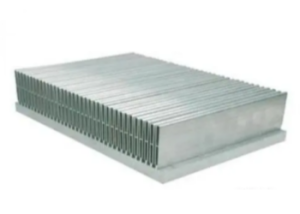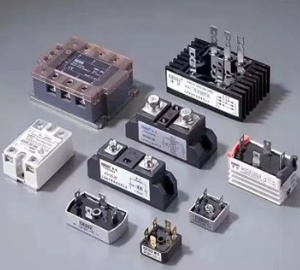Electronic Components Supplier | Transformers, Inductors, Inverters
Low Voltage Transformers: Essential Components in Modern Electrical Systems
Introduction
Low voltage transformers are critical components in electrical power distribution, stepping down voltage levels to ensure safe and efficient operation of various devices and systems. Typically handling voltages below 1,000V (1kV), these transformers are widely used in residential, commercial, and industrial applications. Their primary function is to convert high-voltage electricity into lower, usable voltages while maintaining electrical isolation and system stability.
This article explores the working principles, types, applications, and key benefits of low voltage transformers, highlighting their importance in modern electrical infrastructure.

Working Principle of Low Voltage Transformers
Transformers operate on the principle of electromagnetic induction, as formulated by Michael Faraday. A low voltage transformer consists of two main components:
-
Primary Winding – Connected to the high-voltage input source.
-
Secondary Winding – Delivers the stepped-down voltage to the load.
When an alternating current (AC) flows through the primary winding, it generates a magnetic flux in the transformer core. This flux induces a voltage in the secondary winding, proportional to the turns ratio (N₁/N₂). For example, a 10:1 turns ratio means that a 240V input will produce a 24V output.
Key features of low voltage transformers include:
-
Isolation: Prevents direct electrical contact between input and output, enhancing safety.
-
Efficiency: Modern transformers achieve 95-99% efficiency, minimizing energy losses.
-
Voltage Regulation: Maintains stable output voltage despite input fluctuations.
Types of Low Voltage Transformers
Low voltage transformers come in various designs, each suited for specific applications:
1. Single-Phase Transformers
-
Used in residential and small commercial settings.
-
Common output voltages: 120V, 240V, 480V.
-
Applications: Lighting, HVAC systems, household appliances.
2. Three-Phase Transformers
-
Designed for industrial and high-power environments.
-
Provides balanced power for motors, machinery, and data centers.
-
Typical configurations: Delta (Δ) and Wye (Y) connections.
3. Isolation Transformers
-
Provides electrical separation between circuits for safety.
-
Used in medical equipment, laboratories, and sensitive electronics.
4. Autotransformers
-
Single-winding design with a tapped connection for variable output.
-
More compact and cost-effective but lacks full isolation.
5. Control Transformers
-
Used in industrial control circuits (e.g., PLCs, relays).
-
Typically provides 24V, 48V, or 120V for safe control operations.
6. Dry-Type vs. Oil-Cooled Transformers
-
Dry-Type: Air-cooled, safer for indoor use (e.g., buildings, hospitals).
-
Oil-Cooled: Uses insulating oil for cooling, common in outdoor substations.

Applications of Low Voltage Transformers
Low voltage transformers play a vital role in multiple sectors:
1. Residential & Commercial Use
-
Power Distribution: Steps down grid voltage (e.g., 11kV to 240V/120V) for homes and offices.
-
Lighting Systems: Low-voltage LED and halogen lighting (12V/24V).
-
HVAC Systems: Powers thermostats, control panels, and motors.
2. Industrial Applications
-
Motor Control: Supplies safe voltage to industrial motors and drives.
-
Machinery: Used in CNC machines, conveyor systems, and robotics.
-
Renewable Energy: Integrates solar/wind power into low-voltage grids.
3. Electronics & Telecommunications
-
Power Supplies: Converts AC to DC for computers, servers, and telecom equipment.
-
Medical Devices: Ensures safe power for MRI machines, X-ray systems, and patient monitors.
Advantages of Low Voltage Transformers
-
Enhanced Safety – Reduces risk of electric shock and fire hazards.
-
Energy Efficiency – Minimizes power losses compared to high-voltage systems.
-
Compact & Lightweight – Suitable for confined spaces (e.g., control panels).
-
Reliable Voltage Regulation – Protects sensitive equipment from surges.
-
Cost-Effective Maintenance – Dry-type transformers require minimal upkeep.
Conclusion
Low voltage transformers are indispensable in modern electrical systems, ensuring safe and efficient power distribution across residential, commercial, and industrial applications. With advancements in energy-efficient designs and smart grid integration, these transformers continue to evolve, supporting the growing demand for reliable and sustainable electricity.
Whether for lighting, machinery, or renewable energy systems, selecting the right low voltage transformer is crucial for optimal performance and safety. As technology progresses, innovations like IoT-enabled transformers and eco-friendly cooling methods will further enhance their role in the future of power distribution.
Key Takeaways
-
Low voltage transformers convert high-voltage AC to safer, usable levels.
-
Common types include single-phase, three-phase, isolation, and control transformers.
-
Applications range from household electricity to industrial automation.
-
Benefits include safety, efficiency, and reliable voltage regulation.
By understanding their functions and applications, engineers and technicians can make informed decisions when integrating these essential devices into electrical systems.







